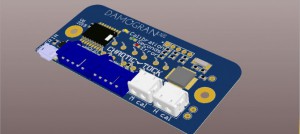It’s the little details that usually ruin everything. When some tests failed they just confirmed what I always suspected wouldn’t work but sometimes there was a totally unexpected inconvienience waiting for us.
Once upon a prototype, we had this incredible idea. A force sensor would be much like a sandwich, a thin layer of soft rubber between two steel plates, one positive and the other negative side of capacitor. We chose rubber because its elastic modulus is some 20 000-times lower than that of steel – the lower the elastic modulus, the softer the material. We also expected 20 000 times greater sensitivity.
We made a test capacitor and it turned out to be about the least sensitive thing on Earth. Wait, what?
After extensive googling and research of exotic articles on materials we found out: elastic modulus shmodulus. Well, it’s fine for dealing with steel, but rubber is something different. If you squeeze a thick piece of rubber, it will be soft just like the elastic modulus says. But if you squeeze a thin piece of rubber, it will be more like the bulk modulus says.
Bulk modulus of steel is around 30% lower than its elastic cousin. Bulk modulus of rubber can be anywhere from hundred to billion times larger than its elastic modulus. Even if rubber is 20 000 times more elastic when expanded, it could be 50 000 times more rigid when thin enough and compressed.
The conclusion: do not stick thin rubber between steel plates. Use it somewhere more pleasant.
P. S.: a reader suggested an insanely detailed post about elasticity and stuff. Also, there’s a useful table of various properties for exotic materials that are usually hard to find.




